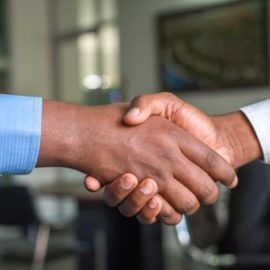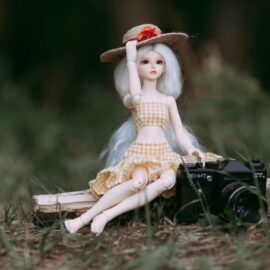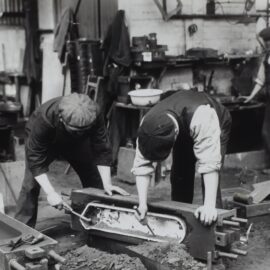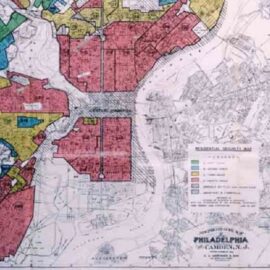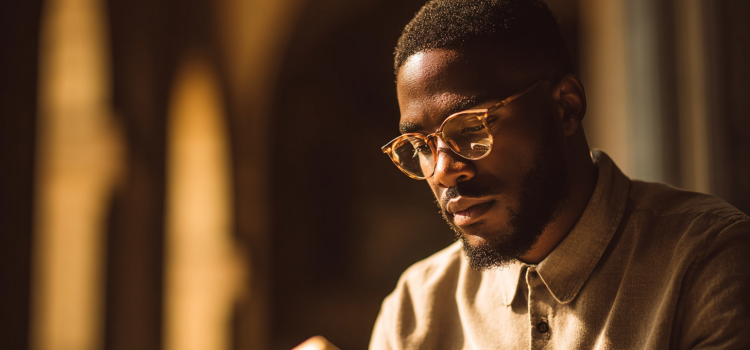
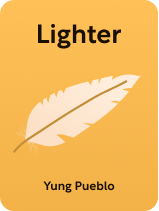
This article is an excerpt from the Shortform book guide to "Lighter" by Yung Pueblo. Shortform has the world's best summaries and analyses of books you should be reading.
Like this article? Sign up for a free trial here.
Have you ever felt weighed down by old habits, emotional reactions, and ways of living that just aren’t working anymore? What’s Lighter by Yung Pueblo about?
In Lighter, Yung Pueblo draws from his journey as a former activist who turned to meditation to overcome addiction, offering a revolutionary perspective on personal and social transformation. He argues that by healing ourselves, we simultaneously contribute to healing the world.
Read below for a brief overview of Pueblo’s Lighter.
Overview of Lighter by Yung Pueblo
In Lighter, Yung Pueblo argues that personal healing and positive global transformation go hand-in-hand. To create a better world, he says, we must heal ourselves from the inside out—shedding fear-based reactivity to become kinder, more compassionate, “lighter” people. By first healing ourselves, we can then show up more fully in our relationships, our communities, and the wider world, spreading our healing outward.
A former activist who turned to meditation to overcome addiction, Pueblo writes from his own experience of personal transformation. He found fame on social media for his relatable messages about hardship and healing; his ideas have reached millions. And as a first-generation immigrant to the United States, he brings a unique emphasis on social injustice and systemic change to the conversation about personal growth.
In this article, we’ll explore Pueblo’s roadmap for personal and collective transformation in three parts:
- Part 1: What Healing Is covers what Pueblo means by “healing” and why both individuals and humanity as a collective need to heal.
- Part 2: Heal Yourself discusses how to transform by loving yourself, letting go, and committing to a healing practice.
- Part 3: Help Heal the World explores how to change your relationships and communities for the better, and how to help create a more structurally kind world.
What Healing Is
Pueblo believes that personal growth is a process of inner healing. Below, we’ll explore his view about what healing entails and why it’s important for ourselves, our relationships, and the planet that we heal.
Healing Means Lightening
In Pueblo’s framework, healing means “lightening,” or shedding the accumulated weight of past conditioning—automatic patterns of thinking, feeling, and acting—that we all carry.
He explains how this accumulated weight builds up: Being emotional creatures, we react emotionally to difficult situations—for example, we might get angry, anxious, or sad. We then tend to cope with those emotions by developing unhelpful or harmful habits of behavior. For instance, some kids cope with abuse by bottling all their feelings up inside, and some teenagers seek solace in drugs. On a more mundane level, many of us react to stress, or even just boredom, by scrolling social media, binging shows, or overeating.
We learn to repeat the reactions that make us feel better, and over time they become automatic, activating when something reminds us of a past hurt or hardship. So to heal, Pueblo says, we need to recognize that we’re living largely through reactive patterns formed from past pain, and then unburden ourselves from the weight of those hurts. In this way, we “lighten” ourselves.
Healing for People and Planet
So that’s what it means to heal—but why do we need healing? According to Pueblo, we need to heal so that we can show up more fully for ourselves, our relationships, and others. This will allow us to work together to create a more compassionate, more systemically just world that gives all people a chance to live happy, full lives.
Pueblo explains that we’re prevented from living this way because when our actions are driven by automatic, reactive patterns, we become disconnected from the present moment. Lacking that connection, we lose touch with our deeper nature as clear, compassionate, creative beings.
Living through reactive patterns causes us to suffer and to spread our pain. Every time we repeat our reactions, we reinforce the pains that formed them. And because we bring that pain into everything we do, we also worsen our relationships, our communities, and the larger world.
As a result, Pueblo says, we collectively create a world that’s based on fear and hurt. For instance, modern economics assumes we live in a world of scarcity where only the “fittest” can survive and thrive. This makes people behave ruthlessly and self-interestedly, causing others to suffer. This manifests in hierarchical organizations that concentrate power at the top, economic models based on cutthroat competition, and social structures that prioritize individual gain over collective wellbeing.
Heal Yourself
So far, we’ve covered what healing is and why we need it. In this section, we’ll discuss how to do it: by loving yourself, learning to let go, and finding your healing practice. We’ll also explain emotional maturity, which Pueblo says is the long-term aim and outcome of healing.
Start with Self-Love
Pueblo writes that once you recognize your need to heal, the next step is to love yourself. Self-love is the foundation of personal transformation because when you have a healthy, stable relationship with yourself, you can do anything. Three key practices will help you develop this foundation: self-honesty, habit building, and self-acceptance.
Practice #1: Be candid with yourself. Look unflinchingly at the truth of your life—acknowledging the pain you carry, the patterns that limit you, and the ways you may have been lying to yourself. Do this with curiosity and care, not judgment. This gentle investigation starts breaking down the barriers between you and your truth.
Practice #2: Build healthy habits. Good habits keep you on track even when life gets tough. Change one key habit at a time, like sleep or exercise. Stay with that change until it becomes second nature, and then move on to your next area of growth. This patient, focused approach creates lasting transformation rather than temporary change.
Practice #3: Accept yourself unconditionally. Pueblo says that real healing isn’t about becoming perfect. Rather, it’s about learning to accept yourself exactly as you are while at the same time acknowledging that you always have room to grow. So as you practice candor and build habits, embrace every part of yourself—what you like about yourself and what you’re less proud of or happy about. For instance, you might accept both the hard-working part of you that loves to learn, as well as the part of you that just wants to laze around.
Learn to Let Go
With self-love as your foundation, you’ve already begun healing. Next, Pueblo turns to letting go, which he says is the core practice of healing.
To let go is to accept your present experience just as it is. This means loosening your grip on how you wish things were and instead embracing your current reality. By allowing things to be as they are, you help your tension, pain, and heaviness to loosen, dissolve, and fade away. This brings you more fully into the present and, over time, heals you from within.
Letting go doesn’t happen all at once, Pueblo says. Sometimes the pain we carry runs so deep that we must sit with and release it repeatedly to fully heal the wound. He names a few areas that you should focus in particular on as you practice letting go:
Reactive emotions. When you notice yourself behaving reactively, pause and observe. Don’t fight the reaction; simply watch it with patience and curiosity. This will allow you to break free from old patterns.
Rigid self-image. Many of us cling to fixed identities—”the responsible one,” “the loner,” “the funny one.” As you heal, let go of old stories about who you are and let your identity become more flexible.
Perfectionism and comparison. Your healing journey will be unique, so there’s no need to compare yourself to others. It also won’t have a constant upward trajectory—you’ll face setbacks, and that’s okay. The idea isn’t to become perfect, but to accept things just as they are.
Find Your Practice
To help you with letting go, Pueblo recommends that you commit to a healing method—a practice—that helps you stay present, centered, and on course. This might include, for example, yoga, meditation, psychotherapy, or journaling. Pueblo found his path in the practice of Vipassana, a Buddhist meditation tradition that’s become popular in the West.
There’s no single “right” practice—you need to find one that fits you and your specific needs. To do this, look for something that feels challenging but not overwhelming. It should push you to grow, but also help you feel grounded and present. Trust your intuition: When you find the right method, it’ll “click” intuitively, and you’ll feel like it’s worth pursuing for the long haul.
Pueblo also says that once you’ve found your practice, you must follow it consistently. Healing is a long-term commitment, not a quick fix. Show up for your practice regularly, even on days when you don’t feel like it. This doesn’t mean forcing yourself beyond your limits, but rather, building a sustainable routine that you can maintain over months and years.
Develop Emotional Maturity
As you continue your healing journey, Pueblo explains, you’ll gradually develop greater emotional maturity, which he defines as a healthy relationship with all of your parts and patterns (thoughts, feelings, and behaviors), including the difficult or imperfect ones.
The clearest sign of progress is a growing acceptance of change. As you heal, you’ll become less resistant to life’s ups and downs. You’ll start to understand that both pleasant and unpleasant experiences are temporary, and you’ll become able to feel deeply both the good and the bad without losing your balance.
Other signs of emotional maturity include increased self-awareness, stronger boundaries, clearer intuition, and the ability to respond thoughtfully rather than react automatically.
Pueblo writes that the path to emotional maturity can be difficult. At times, you’ll struggle to escape old emotional patterns, and you’ll feel like you’re slipping backward. But these struggles are actually signs of progress—they’re your mind clearing out old baggage. You might also struggle to let go of who you thought you were as your rigid self-image softens and becomes more flexible. The key is not to fight these challenges but to meet them with the same gentle awareness you’ve been developing all along.
Pueblo also explains that as you mature emotionally, you’ll sometimes need to slow down and absorb what you’ve been learning. He calls these periods of integration and explains that they’re as crucial to sustainable healing as struggles and setbacks are. Just as you can’t constantly be taking in new information, you can’t always be actively healing and letting go. Resting gives you a chance to integrate what you’ve learned from your healing journey so far, which helps you stabilize new levels of awareness.
Help Heal the World
Now that we know what healing is and how to do it, let’s turn to what our personal healing means for the larger world. In this section, we’ll cover how healed individuals spread their lightness and positivity across three layers: relationships, communities, and society as a whole. We’ll also discuss Pueblo’s idea of “structural compassion,” or redesigning our institutions to be based on love, rather than fear.
Your Healing Influences Others
Pueblo argues that healing and transforming yourself is the single best thing you can do to help create a better world. This is because positivity and lightness is infectious: People want to feel good, so when they encounter your happiness and positive presence, they’ll be inspired to heal themselves, too.
Before becoming a writer, Pueblo was an activist who tried to tackle large, systemic problems through external action, like organizing protests and lobbying government agencies. But he says focusing on external problems will exhaust you unless you first focus on your own healing journey. The clarity, compassion, and creativity you gain from your own healing will equip you to help heal your relationships and communities.
Transforming Immediate Relationships
When you commit to healing yourself, you often transform your closest relationships first. Pueblo explains that this is because you develop the ability to establish healthy boundaries. Boundaries help you avoid or manage difficult relationships with people who are overly negative, so you can focus on nurturing positive connections.
As your self-awareness deepens, you’ll naturally gravitate toward more authentic relationships and find yourself communicating more honestly with loved ones. You might spend less time with people who drain your energy or reject your growth, while deepening your bonds with those who understand and support your journey. In other words, your healing will help you build genuine connections.
Affecting Community Circles
Pueblo writes that as your healing progresses, you’ll also change how you interact with your broader community—the people in your workplace, neighborhood, and local spaces. Once you come to understand your own struggles and patterns, you’ll feel more compassion for others who are caught in their own reactive patterns. This understanding helps ease friction in everyday interactions and creates more harmonious community relationships.
Additionally, since you’re no longer burning energy on inner turmoil, you’ll be better able to spend time on community activities and initiatives that matter to you, like locally organizing or working at the food bank. In these spaces, you can lead by example, using your newfound presence and clarity to inspire others to change and heal themselves.
Your Healing Influences the Wider World
When you heal yourself, Pueblo says, you also become part of a worldwide movement of positive human transformation. Millions of people are engaged in their own healing journeys, and this collective action creates waves of change that combine into something larger than any individual could make happen alone.
As your mind becomes lighter and clearer, you’ll find yourself approaching old problems with fresh creativity and insight. You’ll feel a new willingness to act and to pioneer positive change. This might mean innovating new ways of building community, finding creative solutions to social issues, or simply modeling a different way of being in the world.
Pueblo emphasizes that you don’t need to be perfectly healed to begin contributing—you just need enough inner stability to take meaningful action without jeopardizing your healing process. Don’t exhaust yourself trying to change everything at once. Instead, trust that as you heal, your inner transformation will naturally overflow into positive external action.
Creating Structural Compassion
Pueblo argues that to truly heal our world, we need to create structural compassion. This means redesigning the world’s largest systems, like our governments, economies, and educational institutions, to be based on love, rather than fear. This would radically change these systems, which currently reflect and reinforce our collective survival patterns of fearful, scarcity-driven competition.
While it might sound like an overwhelming task, Pueblo says that positive systemic change begins with the same process as personal healing. First, we must recognize how the world’s major structures create harm. Then, we can imagine better ways of doing things (for instance, structuring healthcare around people rather than profit) and take practical steps to make those positive changes real. He stresses two key changes:
Change #1: Move from hierarchical to circular organizations. Symbolized by pyramids, hierarchies concentrate wealth, power, and opportunity in the hands of a few at the top. Based on the survivalist instinct to accumulate and dominate, pyramids perpetuate systemic harm because they place the interests of the few over the wellbeing of the many.
In contrast, circular organizations spread wealth, power, and opportunity more widely. Structures like worker-owned cooperatives or flat businesses (which don’t distinguish between leaders and employees) allow more people to participate in decisions and have their interests heard. Resources flow more freely throughout these systems, because there are fewer hard-and-fast barriers between the people involved.
Change #2: Move from scarcity to abundance—Our current economic, political, and social structures rest on the assumption that resources are scarce. Pueblo writes that this is false: There is more than enough food, housing, education, and other resources to go around. The real problem is that these resources aren’t distributed equitably.
By redesigning our systems to reflect the fact that resources are abundant, we can ensure that everyone has access to essentials like food, housing, healthcare, and education. We can do this by prioritizing cooperation over competition, and by defining success as contribution to the collective good rather than accumulation of personal wealth. For instance, abundance-based businesses would prioritize worker and community wellbeing alongside profit.
Taking Action
According to Pueblo, after committing to personal healing and structural compassion, the next step is finding your unique way to contribute based on your authentic gifts and interests. Whether you’re drawn to environmental justice, economic reform, education, or other areas, the goal is to discover where your unique energy can be most effective.
You can do this through two primary paths: either joining existing movements and organizations working toward positive change, or pioneering new solutions for unmet needs. The key is to let your contribution emerge naturally from your healing journey, so that your work serves both your own needs and the collective good.

———End of Preview———
Like what you just read? Read the rest of the world's best book summary and analysis of Yung Pueblo's "Lighter" at Shortform.
Here's what you'll find in our full Lighter summary:
- Why so many people are weighed down by systems and conditioning
- How to transform by loving yourself, letting go, and committing to a healing practice
- How your personal healing can help create a better world


